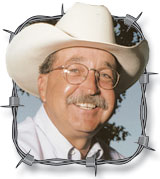Both of our sons were home at the same time recently, each having just finished their semesters away at college. We were sitting around one evening and they were both whining about how tough the next few months were going to be for them. Seth, the oldest, will finish up his Masters degree at the end of this summer, while Zach will begin his senior year in college this fall.
“Don’t fret about it boys,” I consoled, “you’re both starting to hoe the short rows now.”
With puzzled looks on both their faces, Zach asked what in the world I was talking about. That was the only opening I needed to go into one of my famous, 30-minute stories about the old times of which I’m certain they are quite fond.
“When I was a boy,” I began, as both Crownover boys rolled their eyes in unison, “we raised corn in the fertile bottoms of Lick Creek. Keep in mind that this was long before the advent of chemical weed control that allows the crop fields of today to appear so neat in appearance and so productive in quantity. Dad would plow the young corn once or twice with the cultivator to mechanically remove the Johnson Grass and Cocklebur (the two most prevalent weeds back then), but once the corn was taller than the axles of the 8N Ford tractor, it was up to humans with a hoe to de-weed the crop.”
“I was about eight or nine when my father put out the word to every student in the one-room schoolhouse I attended that he was hiring. Most every boy and girl within walking distance of our farm was glad to get the summer work and the fact that Mom was one of the best cooks in the country didn’t hurt either, because lunch at noon was provided.”
By this time, both boys were also faking yawns as they looked at each other and shook their heads. But I continued…
“The best I remember, there were about a half-dozen kids other than myself that showed up the first morning. Dad supplied the razor sharp hoes as we began on the quarter-mile rows closest to the barn. There was shade only on the west end and Mom kept a gallon mason jar of ice water wrapped in a denim jumper there for us to cool off after each ‘round’. The teenagers would hoe two rows at a time while those of us who were younger would each take one row. Dad hoed four rows on each trip but always beat us to the end.”
“My memory tells me that it took a couple of hours to make the half-mile trip down and back, but it was probably a much shorter time. Reaching the shade was a time to get a drink, cool down and allow my father the chance to file any of the hoes that had become dulled since the last break. But, not wanting us to get ‘cold-collared’ (I told the boys to remind me to explain that story after this one), the breaks didn’t last long.
After only a few days, we had worked our way north to the last long row that bordered Lick Creek. From that point, the creek meandered back northeast allowing the remaining point rows to become shorter and much quicker to hoe. When we reached the ‘short rows”, the hot, monotonous job of hoeing corn was almost over. Spirits soared, laughter began and everyone worked a little faster.”
“And that, my sons, is what getting to the ‘short rows’ means.”
Again, as if choreographed, both boys rolled their eyes. Seth, very slow and deliberately, explained that neither of them were “hoeing corn.” “I have a masters thesis to write in philosophy,” he stated. “It’s not going to be quick or easy.”
“Yeah,” chimed in Zach. “I’ll have a senior project in electronic arts to complete.”
“Yes,” I sighed, “both of you are going to have degrees from outstanding universities that cost thousands of dollars and neither of you knew what the ‘short rows’ meant.” I rolled my eyes and yawned.
Jerry Crownover farms in Lawrence County. He is a former professor of Agriculture Education at Missouri State University, and is an author and professional speaker. To contact Jerry, go to www.ozarksfn.com and click on 'Contact Us.'






